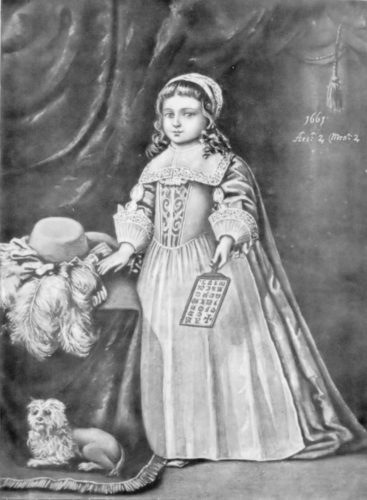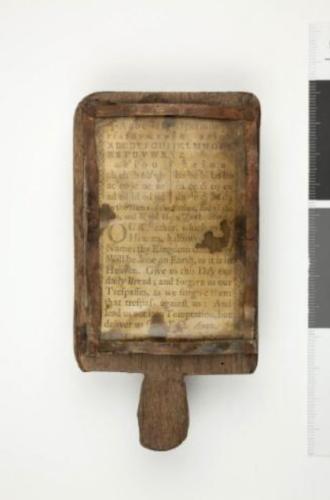Early modern children took their first steps in learning to read with the aid of a hornbook, which comprised a printed sheet of text mounted on a wooden board, which was covered with a thin cover of transparent animal horn. Children could hold and see the delicate and expensive sheet of text, but no sticky little fingers could spoil it. In this formal portrait, Miss Campion looks directly at the viewer, with one hand resting on her beautiful and expensive hat, a symbol of her wealth and status, and the other holding out her hornbook with the alphabet, demonstrating her virtuous application to her studies.
In Shakespeare’s early comedy Love’s Labour’s Lost (c. 1597), which sees four young men committing themselves to a life of study into which love, life and death implode, Moth (really a precocious grammar-school boy in the guise of a page) picks up on Armado’s mocking comment to tease Holofernes (the pedantic school-master) by testing him on school-boy lessons. Both in his quips and in Holofernes’ uncomprehending replies, the horn-book features centrally:
ARMADO. [To HOLOFERNES] Monsieur, are you not lett'red?
MOTH. Yes, he teaches boys the hornbook. What is a, b, spelt backward with the horn on his head?
HOLOFERNES. Ba, pueritia, with a horn added.
MOTH. Ba, most silly sheep with a horn. You hear his learning.
(5.1.44-49)
Click on Miss Campion’s hornbook to find out more.












